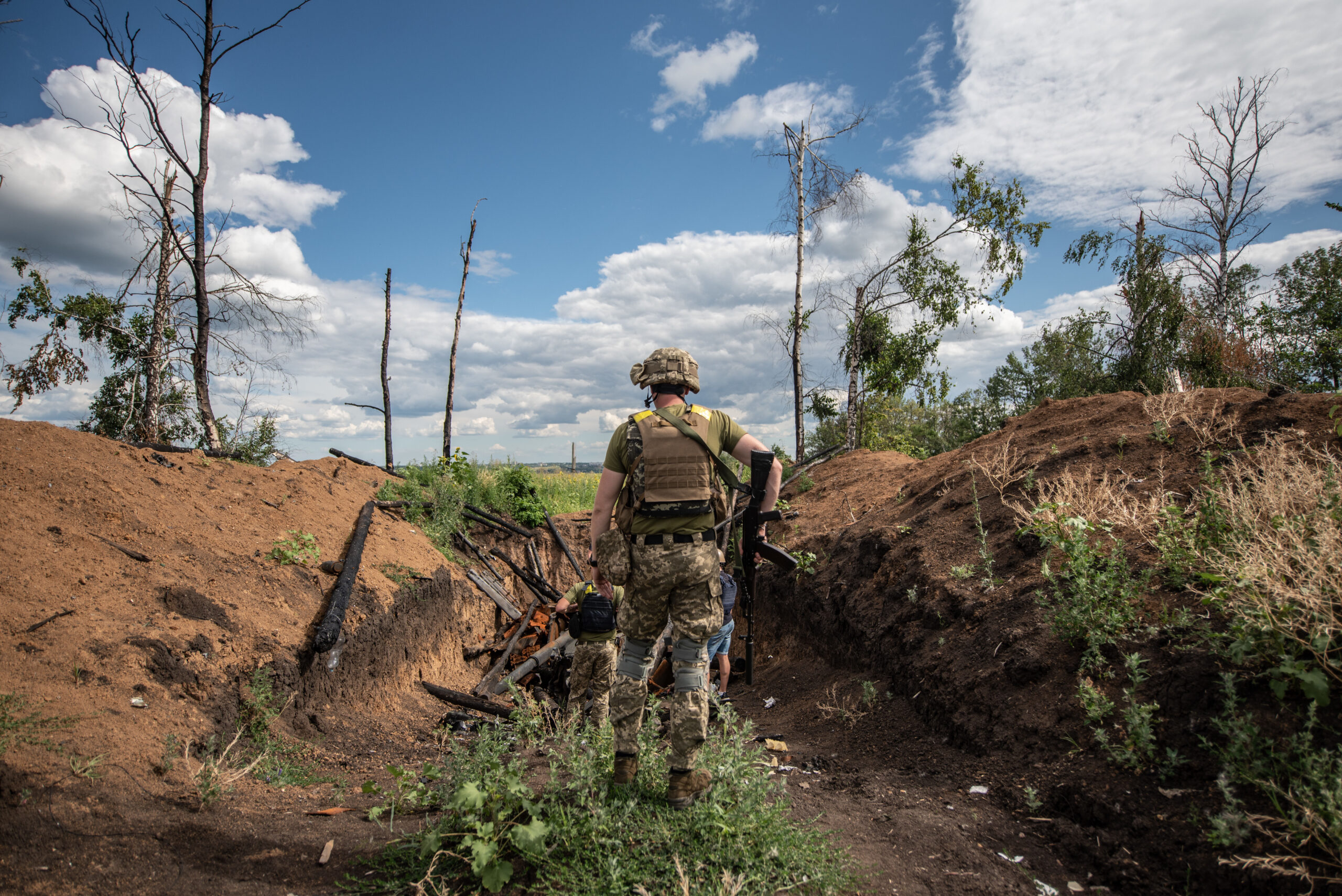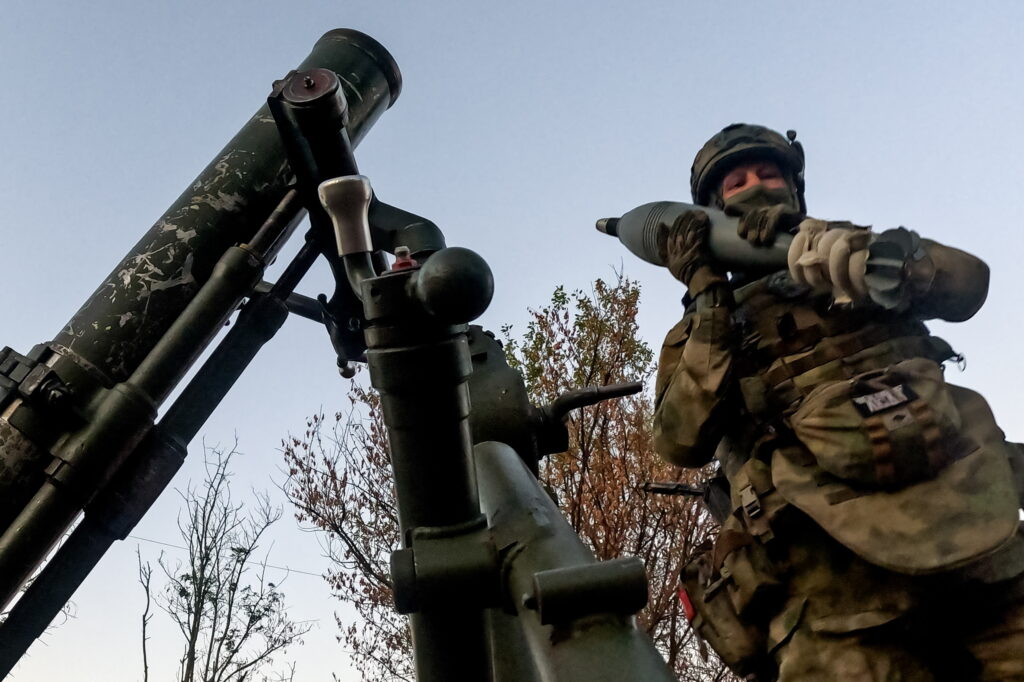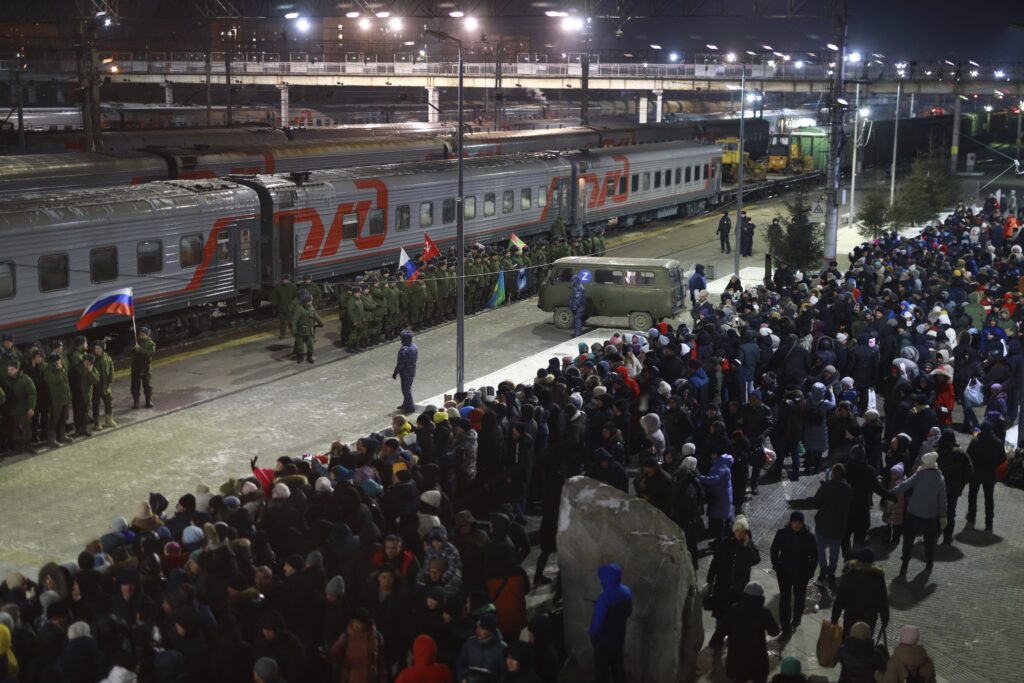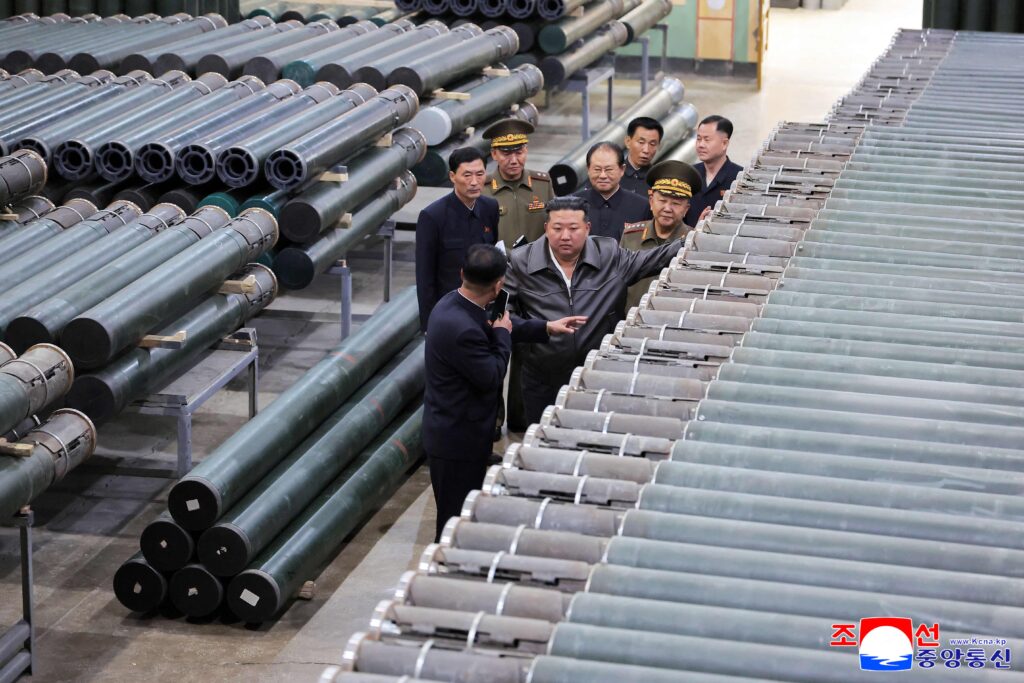Russia took control of parts of the Kharkiv Oblast right from the outset of its invasion, though its forces since proved unable to capture it all. Instead, its presence in the Oblast fluctuated, especially around April when Ukrainians recaptured some territory; by early September, Russia and its proxies still held around a third of the Oblast.
Then came Ukraine’s September counterattack. Within four days, Russian control decreased to 9%. What remained in their hands owes much to the Oskil river, which proved to a natural boundary Ukrainian forces were content to stop at. In other words, between 8−11 of September, the Ukrainian Armed Forces (UAF) liberated 10,000 square kilometres of its territory, a stretch of land the size of Cyprus. It is unlikely that the Ukrainian General Staff had expected such a fast pace of advance and such an operational success.
To a large extent, Moscow’s failure in the Kharkiv Oblast was self-imposed; the UAF superbly exposed and used to their advantage the weaknesses that the Russian Armed Forces had been experiencing. Some of these weaknesses stem from choices made during Russia’s planning for this war. But some were directly linked to other signs of poor planning and intelligence collection in the days and weeks before the start of the UAF operation. The consequences of its failure to halt the Ukrainian advance may have far-reaching consequences not only for the Russian military presence and activity in the northeastern parts of Ukraine but also, potentially, for the outcome of the war in general.
Long-term deficiencies
The Russian Armed Forces entered Ukraine on 24 February with peacetime strength. The General Staff had not introduced additional mobilisation measures to increase the number of personnel in its operational formations, especially tank and mechanised units. Even worse, not only were Russian battalions manned at 70−90% of their authorised strength, but at some point, a decision had been made by the General Staff to decrease the number of service members at mechanised battalions from 539 or 461 personnel to around 345. Consequently, a Russian battalion tactical group, which had previously contained 700−900 men on average, could only deploy from 666 to as little as 499 men. This impacts their ability to organise a capable force, fight, defend and manoeuvre. Decreased personnel also meant gaining and controlling territory would be increasingly difficult, especially if Russians started to bleed out; despite optimistic forecasts, this started happening very early in the war, especially on approaches to Kyiv from the north.
According to the Ukrainian General Staff, the Russian Armed Forces have lost more than 50,000 men since the war started. Even assuming that the number is inflated by 20% (or 10,000) and that not all the losses came from the land forces, Russia may have lost at least 35,000 ground forces personnel within the first six months of the war. Some of these losses cannot be replaced, even in the medium term, as they affected some of the best trained and equipped Russian military units, such as airborne forces, the 1st Guards Tank Army, or the 200th Mechanised Brigade of the Northern Fleet.
Consequently, with losses in manpower and equipment mounting, Russia probably could not generate battalion tactical groups and instead started deploying less capable and smaller company tactical groups. To preserve personnel, the Russian tactical approach has been to conduct artillery strikes on Ukrainian positions and undertake a reconnaissance-in-force attempt to break the defenders’ line. If this attempt failed, then artillery strikes would again seek to soften defences, followed by another ground attack, and so on. This highly inefficient approach delivers limited gains at high costs, especially to equipment and manpower. To fix this deficiency within its structures, a Russian command would seek areas that were either lightly defended or would crumble under a heavier attack. This is exactly what happened near Popasna in May: for a month, Russian forces could not break Ukrainian lines, but with reinforcements, they managed to push the Ukrainian troops 10−20 kilometres west within a few days. The same occurred near Lysychansk when Russia’s military created a positive correlation of forces and used it to their advantage to capture the city. However, neither of these tactical successes delivered anything akin to operational victory, because Russia’s military again lacked manpower. After the first line of defence was broken, the attackers lacked the personnel to pursue withdrawing defenders and prevent them from establishing another line of defence further back. This is completely opposite to what happened in the Kharkiv Oblast in early September, when the speed of Ukrainian advance and the employment of highly mobile special and reconnaissance forces put constant pressure on withdrawing Russian formations, not allowing them to put up any organised defence. Most Russian forces ultimately withdrew from the Kharkiv Oblast in a disorganised rout.
Another long-term deficiency has been the inability to maintain equipment in the field. This well-known problem has plagued Russia’s lland forces for decades. Since 2016 the land forces have been growing their repair and evacuation capabilities to address this weakness. To this end, each military district set up repair and evacuation battalions, which were later converted into regiments. The creation of MD-level regiments has increased the ability to evacuate and repair equipment by a factor of 1.4.
However, images and videos captured in the Izyum area in particular, and the Kharkiv Oblast in general, showed dozens of heavy equipment such as tanks, IFVs, and APCs in various states of decay. Some of them were clearly in line to be serviced and repaired, but the sheer number of vehicles abandoned makes one wonder about the impact they would have made on the frontlines when every tank, every armoured vehicle counts. Consequently, it is unclear whether repair and evacuation regiments significantly impacted the battlefield, especially in an environment where HIMARS and artillery threats seriously degraded Russian rear support.
But the Russian land forces lacked spare parts, lubricants, and probably personnel to undertake the necessary work to bring all these damaged or broken equipment back to service. Now, to some degree, this abandoned equipment will be used by Ukrainian land units.
Short-term mistakes
As already noted, Russia does not have the personnel numbers to man the entire frontline properly. Until September, Moscow had the overall initiative and decided the time and place of its subsequent engagements. However, reports about the Ukrainian build-up aimed at retaking the Kherson Oblast and probably its own intelligence presented the General Staff with a dilemma: either significantly weaken one front to reinforce southern Ukraine or increase the chances of a Ukrainian counterattack in the Kherson Oblast by not bulking its its forces there. The first option was chosen, and the Russian military presence in Kharkiv Oblast was significantly reduced from mid-July. This came when Russian attacks from Izyum towards Slovyansk were occurring daily and when the Izyum garrison could field several relatively well-equipped company/battalion tactical groups. The drawdown in the Kharkiv Oblast immediately impacted the number of attacks towards Slovyansk, not only undermining the pursuit of one of the main objectives in this war but also indicating that the garrison capabilities were reduced.
The Ukrainians, therefore, chose the best place to attack as Russia had no reserves to plug defensive holes. Once the first line was broken, Ukrainians could manoeuvre in-depth relatively unopposed, surprising the opponent and causing organisational breakdown across the whole of Russia’s western army group.
It is unclear whether this was an intelligence failure where Russia did not spot the Ukrainian build-up, or underestimated it, or maybe its generals recognised how an attack in Kharkiv was a real possibility, but too late to respond.
At the same time, Moscow probably did not realise that Kyiv could employ 6−8 manoeuvre brigades into combat at once, which perhaps suggests that the General Staff could not accurately establish the strength, composition, and location of Ukrainian core units. After all, Ukraine deployed into combat some of its most seasoned formations, such as the 92nd Mechanised and the 3rd Tank Bridges or the 25th Airborne, 80th and 95th Air Assault Brigades.
Future Implications
Russia’s failed attack on Kyiv during the early days and weeks of the war ended phase one of the conflict. Phase two, which lasted since late April, probably ended in Russian failure too. The fall of Izyum, the crossing of Seversky Donetsk River towards Lyman, and pushing Russians out near Siversk mean that the threat to Slovyansk and Kramatorsk has been alleviated.
In fact, it is doubtful that Russians will rebuild their strength fast enough to allow them to threaten the northern parts of the Donetsk Oblast. The Western Group of Forces has been rendered ineffective, losing a big part of its combat capability. Russia will probably have no offensive potential in the northern parts of the front over the medium-term of at least six months.
We have, therefore, probably entered the third phase of the war, where Kyiv has the initiative and decides on future engagements. Kyiv is on the offence, while Moscow’s posture could become increasingly defensive overall.
The critical issue is a lack of personnel. To respond to any larger threat in any direction, assuming it is recognised in time, the Russian Armed Forces need to move their units around the frontline to reinforce their positions and plug gaps. This approach is unsustainable over the long term.
The only consolation for the Russian General Staff is that with the frontline now smaller, Russians will have more troops per sq km to defend their territories. Conversely, Ukrainians will have fewer troops per sq km to hold recaptured territories and conduct attacks. However, Ukraine has access to highly-motivated and relatively well-trained soldiers, while Russian recruitment efforts have delivered mixed results at best, forcing Moscow to increasingly rely on forcefully mobilised, demotivated men from LPR/DPR and Wagner mercenaries.
Operationally, we do not know the Ukrainian plans and whether they will extend its attacks from the Kharkiv into the Luhansk Oblast. However, although considered a low-probability event now, another Kharkiv-like operation could relatively quickly place Ukrainian forces along the Luhansk-Severodonetsk line and effectively force the collapse of Russian forces’ willingness and ability to fight in this war. It is no longer science fiction to think that the war will end in a matter of weeks or months, not years.
In this war, the Ukrainian strategy has been to trade territory for time, and with mounting Russian losses, time is now on Kyiv’s side.










